How To Do SEO Content Gap Analysis Like A Pro
Daniel Trick
Jan 19, 2024
9 min read
A content gap analysis can give you a better understanding of how to improve your content strategy and attract more visitors to your site.
It shows you which content your website might be missing compared to your competitors. And it helps you make sure you’re covering the topics your audience is interested in.
In this guide, we’ll reveal the exact process you can use to perform an SEO content gap analysis for your clients to keep them ahead of the competition.
We’ll cover:
- What a content gap analysis is
- Why it’s important
- The tools you need
- How to perform a content gap analysis
What Is Content Gap Analysis In SEO?

A content gap analysis in SEO is a process where you compare your website’s content to your competitors’ content. When you do a content gap analysis, you’re trying to answer questions like:
- Which topics are my competitors writing about that I’m not?
- Are there popular search terms that I haven’t covered in my content?
- What types of content (like articles, videos, or infographics) do my competitors have that I don’t?
You can find the ‘gaps’ in your content by answering these questions. These gaps are opportunities to create new content and drive more traffic to your website.
But content gap analysis is about more than just covering more topics. It’s about making sure your content matches the evolving needs of your audience.
Keeping your content aligned with searchers’ needs and user intent makes your website more relevant and valuable to your audience.
Why Is Content Gap Analysis Important?
Here are the three primary reasons why you should perform regular SEO content gap analysis for your clients:
Improve Search Visibility
Filling content gaps means your website covers the topics your target audience is searching for online. You can increase your keyword coverage and boost your visibility in search results. This can lead to more organic traffic.
Helps You Understand Your Audience Better
Looking for content gaps can help you understand what your audience is interested in. You can make sure your content strategy is aligned with their needs and that they can find the information they need on your website.
Keeps You Competitive
If your competitors are covering topics you aren’t, they are getting organic traffic that could be coming to your website. Regular SEO content gap analysis keeps you competitive.
You can make sure you’re competing for the terms your target audience is searching for online.
One of the most valuable things you do for your SEO clients (who are heavily focused on content marketing) is to:
-continue effective content gap/topic research for years
-be mindful of updating old content to keep it fresh and revitalize rankings.Slow and steady upward trends
— Dan Kern (@kernmedia) July 23, 2019
Preparing for Content Gap Analysis
Before you get started, it’s important to make sure you have the right tools.
These tools help with everything from understanding your own content to exploring what your competitors are doing.
Ahrefs
Ahrefs is one of the best all-around SEO tools. It comes with a ready-made content gap analysis tool.
You can also research the keywords your competitors are ranking for and get estimates on the amount of traffic they are generating from the topics you have yet to cover.
Semrush
Semrush is another excellent tool for keyword research and competitor analysis. You can get detailed insights into your competitors’ content strategies. It shows you the keywords they use and how their content is performing.
Screaming Frog
Screaming Frog is a super helpful tool for auditing your website. It crawls through your site and identifies broken links, missing titles, and other SEO problems.
But you can also use Screaming Frog for content gap analysis. Running a crawl can show you all the content you currently have.
Google Search Console
This tool provides data directly from Google on how your website performs in search results. This is really useful for content gap analysis. You can see which keywords your site is currently ranking for.
Spreadsheets
SEO tools can provide you with a ton of data. But you need a way to organize all the data you collect.
A good old-fashioned spreadsheet is a great option here.
You can use spreadsheets to track the keywords, topics, and types of content you and your competitors have. This makes it easy to identify content gaps and keep track of your strategy to fill them.
Audit Your Current Content Inventory
The first step in an effective content gap analysis is to take stock of your current content inventory.
Start by making a list of all the content on your site.
This includes all your blog posts, videos, infographics, and other content.
You can do this manually or by using a tool like Screaming Frog to crawl your site and find all your pages.
Simply enter your domain and hit ‘Start,’ and Screaming Frog will provide a list of all the URLs associated with your website.
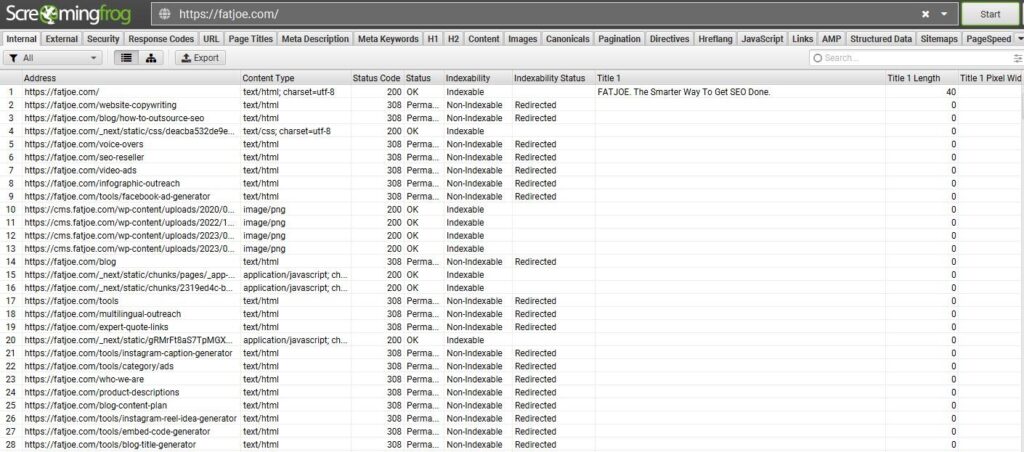
Once you have a list, organize your content into categories.
You can create content categories based on topics, content type, or any other way that makes sense for your site. This helps you see the topics you have covered and the content formats you’ve used.
Look at how each piece of content is performing. You can use Google Analytics to see how many people visit each page and how long they stay.
It’s also important to audit your current keyword coverage.
Google Search Console can show you how your content appears in search results and which keywords bring people to your site.
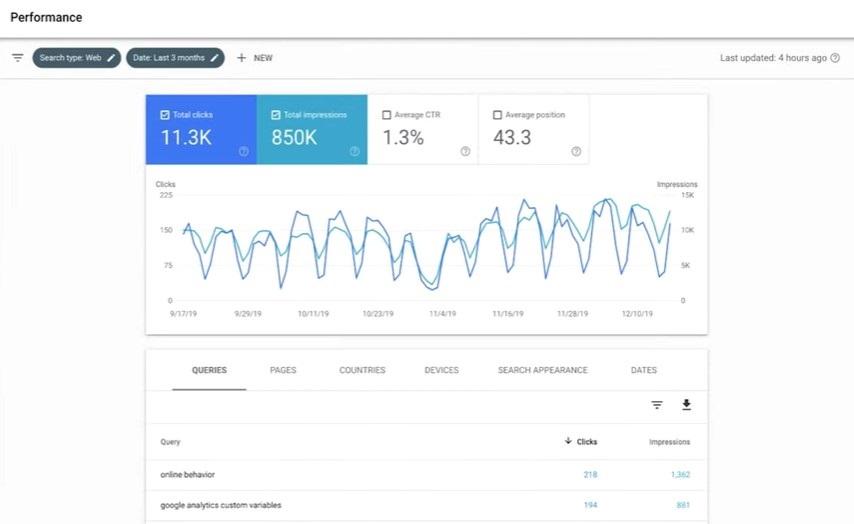
You can also use Ahrefs or Semrush to see which keywords your website currently ranks for.
The goal is to clearly understand what content you currently have and your current keyword coverage.
Once you’re done, add your data to a spreadsheet.
Analyzing Competitor Content
The next step is to analyze competitors’ content and see how it compares to yours.
First, you need to know who your competitors are.
You’ll need to focus on two types of competitors: direct and indirect.
Direct competitors are other businesses that provide products or services similar to your client.
Indirect competitors are websites that appear in search results for your client’s target keywords. They might not sell the same products as your client but compete for the same informational and commercial keywords.
The easiest way to identify competitors is to search for keywords relevant to your client’s industry. Analyzing the search engine results page (SERP) will give you a good idea of who you are up against.
You can use a tool like Similarweb to get insights into websites with similar audiences.
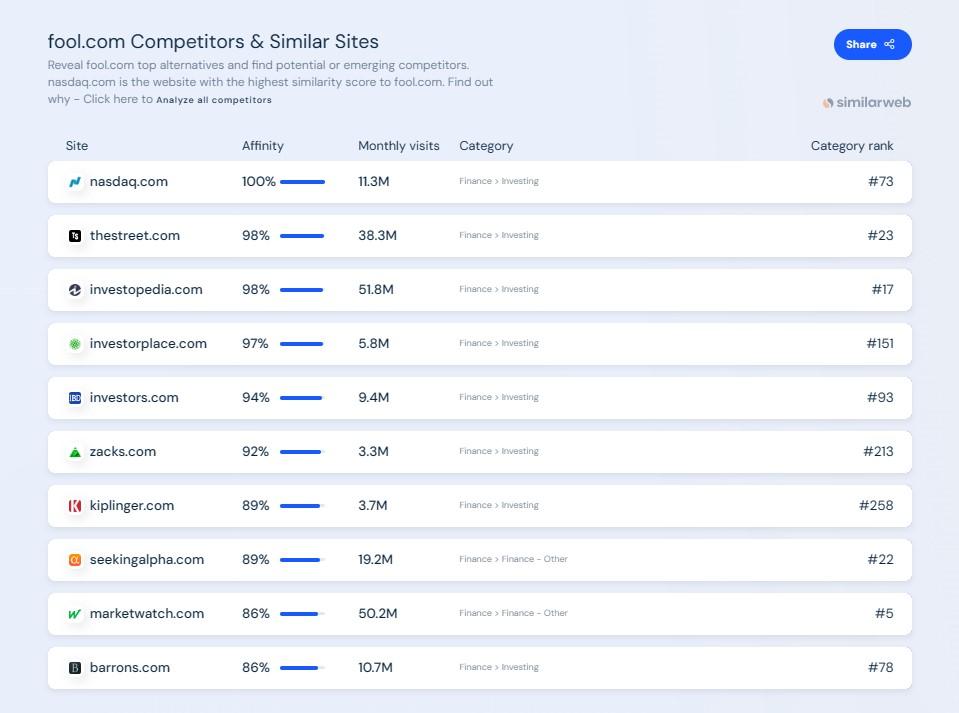
Once you have a list of competitors, start looking at their content. Take note of the types of content they produce and the keywords they rank for.
Ahrefs has made it really easy to do content gap analysis.
SEO Tip:
Find secondary keywords you can rank for very easily by doing a content gap analysis in Ahrefs at the URL level.
Compare you and 3 competitors.
Easy money.
— Shawn Hill (@shwnhll) September 15, 2022
In this example, we are going to compare My Swingle’s article on lawn care to its competitors.
First, start by specifying your article and the articles you are competing against. The more the merrier! In this example, I just chose three.
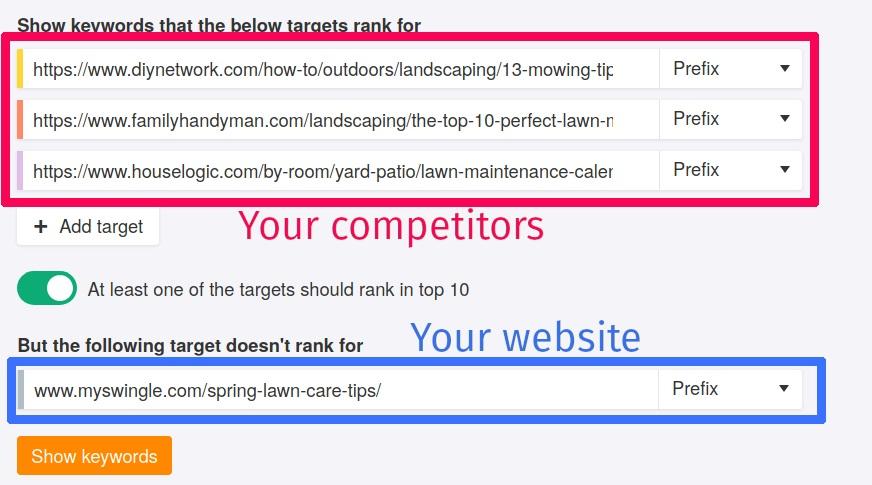
Another tip to improve your results is setting the Intersections to “1 target”. This will show unique keywords that one competing site ranks for, but the others don’t.
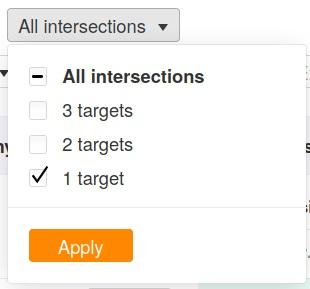
It’s how you can find real, unique (and often enough easy) opportunities to improve your content.
And after all that, here are your results! Experiment with Ahrefs’ filters to find more interesting results.
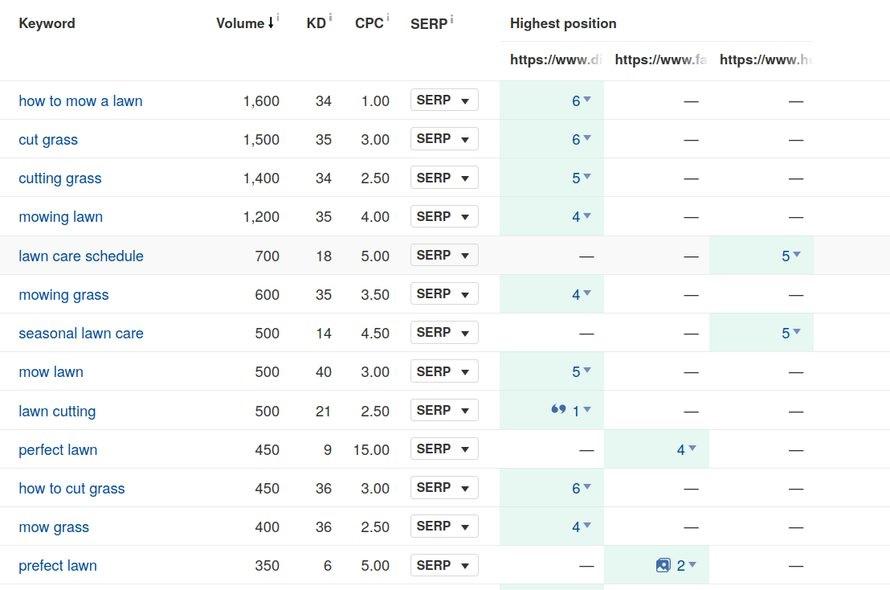
Semrush can also be very helpful here.
You can compare your domain to several competitors to get a breakdown of the keyword overlap and top keyword opportunities.
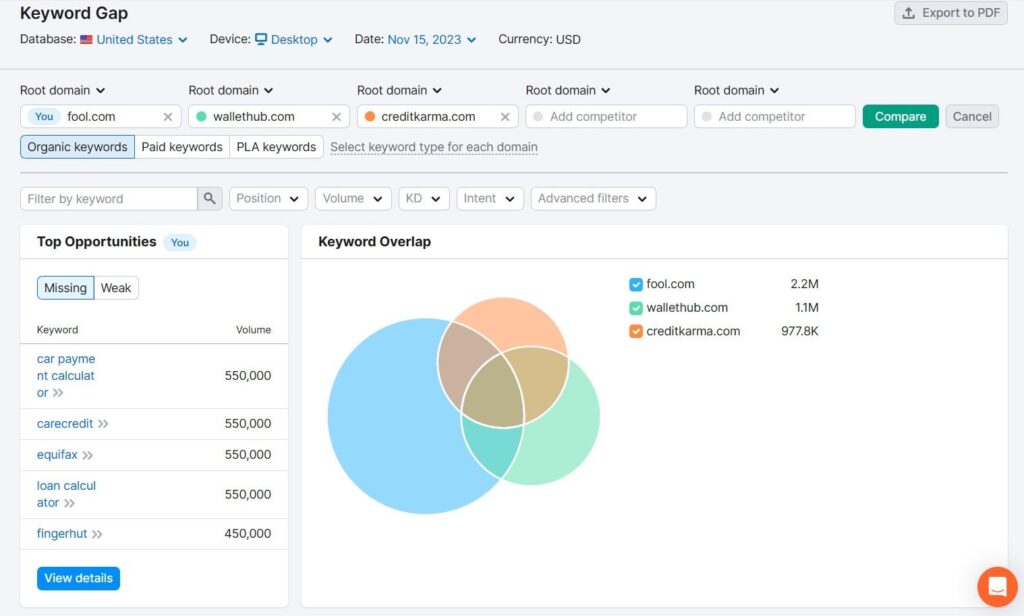
Look at the topics and relevant keywords your competitors cover and compare them to your content inventory. This will help you see what they are talking about that you aren’t.
Identifying Competitor-Based Content Gaps
After analyzing your own content and your competitors, the next step is to identify content gaps.
There are a few different types of content gaps:
- Topics that you haven’t covered
- Keywords that you’re not ranking for but your competitors are
- Different formats of content (like videos or infographics) that you don’t have
Use the data from your analysis to find opportunities where you could add value. That could involve creating new content or optimizing your existing content.
Market-Based Content Gaps
Alongside the competitor-based approach, you can also look for market-based content gaps.
This method is harder to automate, often involving creativity and out-of-the-box thinking.
It involves:
- Getting a crystal clear idea of who your audience is as well as their needs and desires
- Doing keyword research to find what topics and questions are not answered in your article, page, or resource
- Coming up with hypotheses of why your page is not ranking for those terms and putting your theories into action
Let’s say you have a popular article out about whiteboard paint. You know, that stuff allows you to turn your ENTIRE office walls into a whiteboard.
But here’s the thing. You assume that the vast majority of your readers want to put this paint up in office buildings. So do your competitors.
You run a poll, and it turns out 40% of your readers are educators, 30% are at-home DIYers, and the last 30% want a whiteboard wall in their office.
Armed with this information, sneakily deleting the poll so your competitors don’t discover this valuable information, you begin keyword research.
Through all sorts of keyword research tools, you’re able to find a slew of educator, and DIYer-focused topics and questions that both you and your competitors fail to discuss.
Updating your article to include topics that are not discussed as much could provide a massive boost to that article’s traffic and conversions.
Never just assume in marketing.
Developing a Plan to Fill Content Gaps
Once you have identified your content gaps, the next step is to develop a content plan to fill them.
It’s important to note that not all content gaps are equally important.
You want to prioritize filling gaps most relevant to your audience and business goals. Generally, you should focus on topics that are closely related to your products or services and have the potential to attract more visitors.
Use Semrush or Ahrefs to analyze the search volumes, keyword difficulty, and the success of similar content on competitor sites to decide which gaps to fill first.
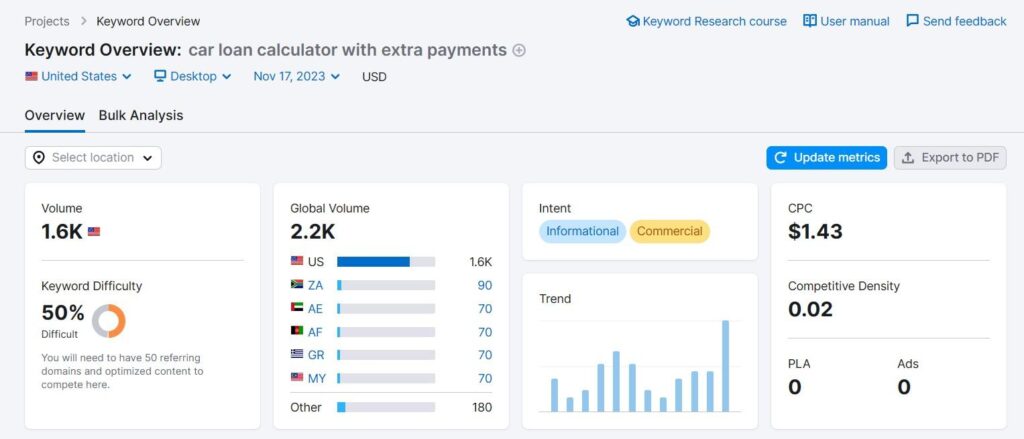
You can use our guide on keyword value to help you decide which terms to target first.
If your client’s website is relatively new, competing for highly competitive keywords will be difficult.
But there are still opportunities.
You can use the keyword difficulty and search volume filters to narrow in on more achievable content gaps.
One of the quickest ways I hack topical growth of a site is by using @ahrefs Content Gap on competitors, filtering by lowest Keyword Difficulty and a minimum search volume to get a targeted low competition list of keywords I haven’t got a page for to create and internal link – pic.twitter.com/bJobaz1r63
— Charles Floate 📈 (@Charles_SEO) May 1, 2020
You’ll also need to decide on the best content format for each gap. Some topics might better suit blog posts, while others might work better as videos or infographics.
Make sure you consider the search intent when you’re reviewing content gap opportunities.
Search intent is the purpose behind a search.
Sometimes, you may have content on a topic, but it might not align with what users are searching for. Identifying and correcting these mismatches is important.
You can learn more about how to optimize for search intent in our guide.
Implementing Your Content Plan
The final step is to put your content creation plan into action.
You can create new blog posts, videos, and other content to fill the gaps in your strategy.
In addition to creating new content, you’ll likely need to improve some of your existing content assets.
This might include updating old blog posts with new information, adding new keywords, or improving the overall content design.
Tools like SurferSEO can be super helpful for content optimization.
You can compare your content to competitors’ pages and get a visualized breakdown of aspects like content depth, headings, and NLP sentiment.
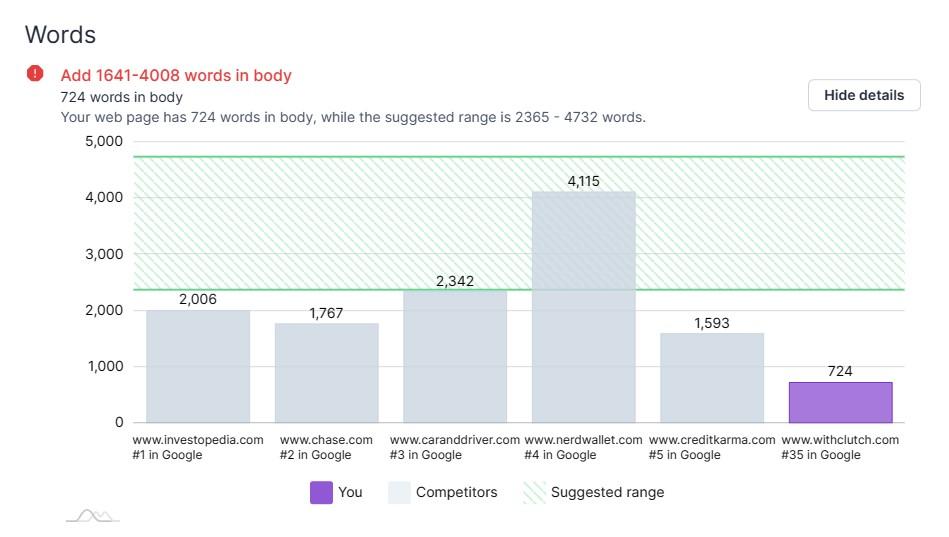
You can also see the keyword density of competing pages with recommendations on how often you should use a term.
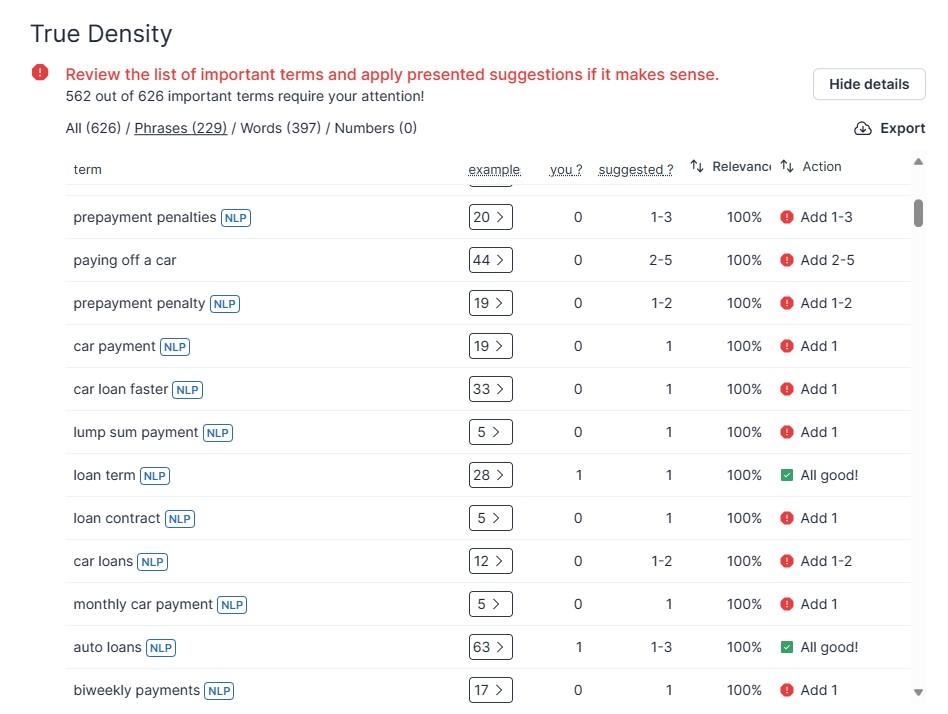
These recommendations can be a helpful guide to show you if your content answers the questions your audience is asking.
Find Untapped Content Opportunities for Your SEO Clients
A content gap analysis is a process you should be doing for every client.
If you’re taking on a new client with limited search visibility, a content gap analysis will show you what you need to do to build out your strategy. You can identify the topics and content types you need to create to compete.
If you have a website already pulling in a lot of traffic from Google, you are responsible for protecting that asset from newly created, competing content.
Doing a content gap analysis at least once a quarter is recommended for best results.
Best of luck and happy content gapping!
Become a Pro at SEO
Join 65,000 others and learn the secrets to SEO success with our weekly blog posts.
